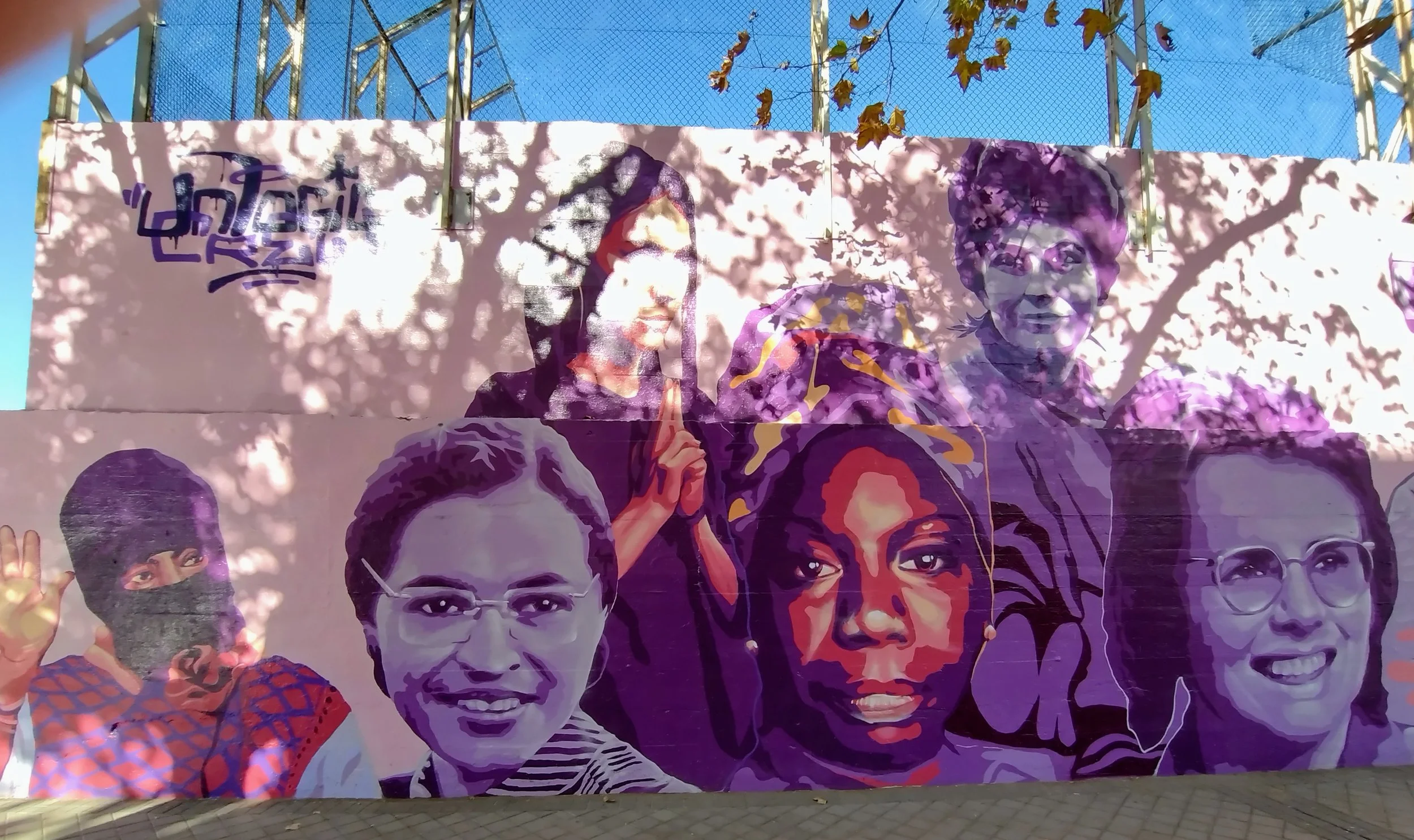The ethical character of culture — choosing visionary presence
Silence is not justice — it can hide truth, but it cannot heal
At SoulGround Studio, our work begins with a simple but demanding question: what is the ethical character of culture?
Our ethical charter sets clear standards for collaboration, but culture itself is not only about rules—it is about presence, rooted in visionary power. In September 2025, the boycott of conductor Lahav Shani in Belgium, my home country, reopened the debate on whether silence brings us closer to justice or whether it risks closing the very doors that culture can keep open.
From Nina Simone to Francis Kéré, from the Jewish Museum Berlin to the gardens of Ground Zero, history reminds us that art and architecture are never neutral. They can be complicit in division, or they can embody visionary presence—memory, justice, dialogue, and hope made tangible.
In this latest blog, we reflect on why we choose presence over silence and how our spaces are designed to breathe peace into the world.
The Lahav Shani debate
“Music can express everything in the human spirit. If only the world could listen, really listen, there would be less conflict.”
In September 2025, Lahav Shani was scheduled to conduct the Munich Philharmonic at the Flanders Festival in Ghent, Belgium. The performance was canceled after public calls for boycott amid renewed war in Gaza. Shani, though not representing an Israeli state institution, became the target of controversy simply by his identity.
The pain behind these calls is real. Yet we must ask: would silencing this music bring us closer to peace—or would it close the very channels through which change might one day flow?
Shani is not a stranger to dialogue. As a young pianist and conductor, he played with Daniel Barenboim’s West–Eastern Divan Orchestra, uniting Israeli, Palestinian, and Arab musicians in shared rehearsal and performance. That experience shaped his vision of music as coexistence.
In recent years, Shani has also spoken in favor of peace, declaring: “Every life lost is one too many.” When the boycott debate erupted, I took his defense publicly on social media. Not because I deny the pain of injustice, but because I believe silencing voices shaped by dialogue risks closing the very doors that culture alone can hold open. Shani’s engagement reminds us that even within institutions reluctant to make political statements, there are individuals who carry within them the seeds of peace—and it is visionary power that allows those seeds to germinate.
This debate unfolded in Belgium, the country where I live and work—a place no stranger to cultural crossroads. On our small patch of Europe, French and Dutch voices meet, African rhythms resonate in Brussels’ Matonge, and countless migrant stories weave into our shared fabric. Culture here has never been neutral—it has always been encounter, tension, and transformation.
Artists who refuse silence
History shows that silence is rarely the path of justice. When injustice grows, artists have often been among the first to raise their voices—sometimes explicitly, sometimes through the quiet persistence of beauty.
During apartheid, Hugh Masekela, Miriam Makeba, and Abdullah Ibrahim used music to carry memory and hope. Yet resistance did not come through sound alone. Athol Fugard’s plays exposed the absurd cruelty of racial segregation on the stage, while the photographs of David Goldblatt bore witness to the daily realities of apartheid.
Elsewhere, Nina Simone, outraged by racial violence in the United States, declared that an artist’s duty was to reflect the times. Her songs became anthems of defiance, just as James Baldwin’s essays and novels gave voice to Black dignity and struggle in the face of systemic injustice.
The Chilean singer Víctor Jara was silenced by dictatorship, but the murals of Brigada Ramona Parra in Santiago kept resistance alive on the city walls. In Nigeria, Fela Kuti fused Afrobeat with fearless critique of tyranny, while writers like Chinua Achebe and later Ken Saro-Wiwa challenged both colonial legacies and political corruption through words that could not be ignored.
This quest for justice has also shaped architecture. Alejandro Aravena in Chile pioneered participatory housing projects that gave poor families not just walls but dignity. Lina Bo Bardi in Brazil saw architecture as a tool for democracy, creating spaces where elite and popular culture could meet as equals. Hassan Fathy in Egypt turned to traditional mudbrick construction, empowering rural communities to build for themselves. Teddy Cruz works along the San Diego–Tijuana border, transforming architecture into a lens on migration and inequality. Eyal Weizman founded Forensic Architecture, using spatial investigation to expose war crimes and human rights abuses. And Francis Kéré, from Burkina Faso, builds schools and civic spaces that prove architecture can be both modern and deeply rooted in community empowerment.
In all these examples, art and architecture are not neutral ground—they are presence in the struggle for justice. Some voices are loud and explicit; others take the quieter path of integrity. We respect both. Silence imposed from outside—by boycott or repression—is not the same as silence chosen as an inner discipline.
But our red line remains clear: we cannot stand with artists or architects who lend their voice in favor of injustice or violence. Visionary power is never complicit; it always bends toward dignity, creativity, and justice.
Architecture as a voice for peace
Architecture does more than shelter; it speaks. Every wall, every opening, every garden carries meaning. Buildings can wound, exclude, and dominate — but they can also heal, invite, and remember. When destruction and injustice seem overwhelming, architecture can still hold the memory of loss and open a space for dialogue.
Some of the strongest voices for peace are memorials and landscapes. The Kaiser Wilhelm Memorial Church in Berlin was left in ruins after WWII—not rebuilt to erase the trauma, but preserved as a wound that remains visible. Peace here is honesty, the courage to remember instead of covering over.
The Hiroshima Peace Memorial (Genbaku Dome) stands in the heart of the city as the only surviving structure near the atomic blast. It embodies a scar turned into a witness, insisting that peace must be built on truth. The Apartheid Museum in Johannesburg confronts visitors with the injustices of racial segregation, forcing recognition as the first step toward reconciliation. The National Civil Rights Museum in Memphis was created at the site where Martin Luther King Jr. was assassinated; it transforms a place of violence into a school of justice and courage. The Jewish Museum Berlin, designed by Daniel Libeskind, uses voids, broken lines, and tilted walls to make absence visible—a building that does not explain history but lets visitors feel its rupture.
Peace can also be grown in landscapes. The Garden of Peace in Hiroshima by Isamu Noguchi merges Japanese garden tradition with modern sculpture, creating a contemplative space where visitors move from destruction to resilience. The planned Garden of Forgiveness in Beirut sought to heal a city once divided by civil war, making peace visible in its very soil. Superkilen Park in Copenhagen integrates objects from more than 60 migrant communities—benches, fountains, tiles, and lamps—embedding diversity directly into the design of public space. Peace here is the celebration of difference as belonging. In New York, the National September 11 Memorial & Museum occupies the original World Trade Center site:Reflecting Absence by Michael Arad and Peter Walker & Partners forms twin reflecting pools in the footprints of the towers, with victims’ names inscribed on bronze parapets; a tree-planted plaza surrounds them, including the Survivor Tree, a rescued pear that now stands as a living emblem of resilience. Peace here is solemn remembrance held in water, stone, and shade. And in India, Auroville, founded in 1968, was envisioned as an international city of peace and human unity. At its heart, the Matrimandir—a golden sphere surrounded by radiating gardens—was designed as a universal space for meditation and reflection. Peace here is not only remembered; it is enacted, cultivated, and renewed every day.
These examples remind us that architecture is never neutral. It can erase, or it can remember; it can divide, or it can reconcile. At SoulGround Studio, we choose the latter: spaces that do not hide wounds but open them to dialogue, spaces that breathe resilience into their surroundings, and spaces that make peace visible. This is what we mean by rooting space in visionary power: not beauty alone, but presence—alive with memory, justice, and hope.
Choosing presence
Belgium has taught me this: our small land is proof that dialogue is messy, imperfect, and sometimes frustrating—and yet always more fruitful than silence. If we closed the doors between our own communities, there would be no Belgium left at all.
So I believe—and we believe—that the path of culture is presence.
Not turning away, but showing up.
Not closing doors, but keeping them ajar.
This is the visionary task of our time:
to weave fragile, luminous connections across borders and wounds,
so that even in the shadow of violence, the seeds of peace may still be sown.
Not turning away, but showing up. Not closing doors, but keeping them ajar.
“For me garden design isn’t just about plants, it is about emotion, atmosphere, a sense of contemplation. You try to move people with what you do.”
We cannot walk the road of silence. We choose the harder path: to engage while remaining conscious, to collaborate without becoming blind, and to open doors while acknowledging the wounds that exist.
This is why, at SoulGround Studio, our spaces are not imagined as neutral shelters. They are conceived as living presences:
Every space we design is not only a sanctuary but also a presence.
It protects, but it also welcomes.
It reflects the inner clarity of its resident or worker.
Yet it remains open to the landscape and community around it.
In a world often fractured by silence and division, our spaces embody dialogue:
gardens that heal, walls that remember,
spaces that breathe peace into their surroundings.
This is the vision of SoulGround Studio:
to build spaces that are refuges—and presences of justice, dignity, and imagination.
A retreat, for us, is not withdrawal. It is a way of standing in the world—ethically, responsibly, and creatively.
We believe presence begins with listening. If you have reflections on cultural boycott, dialogue, or the role of art and architecture in times of conflict, we would love to hear from you. Contact us to share your reflections and join the conversation.
By Thierry Limpens



